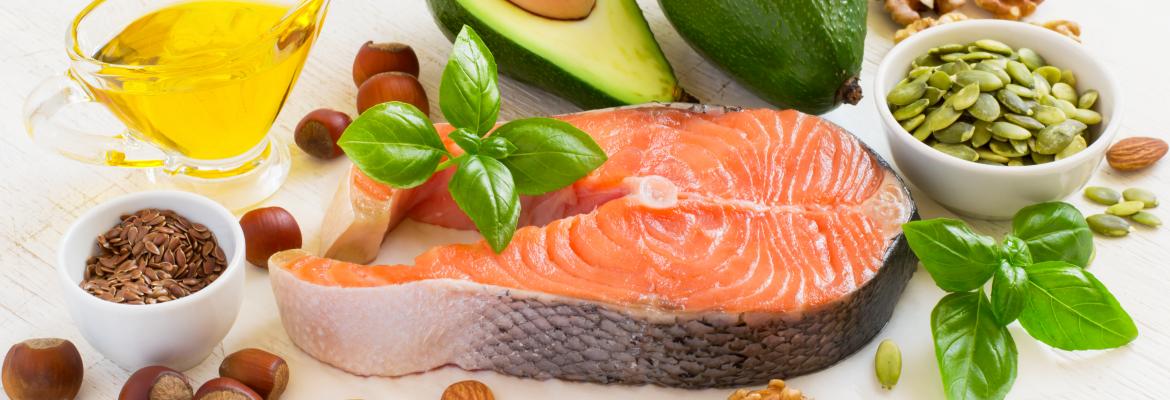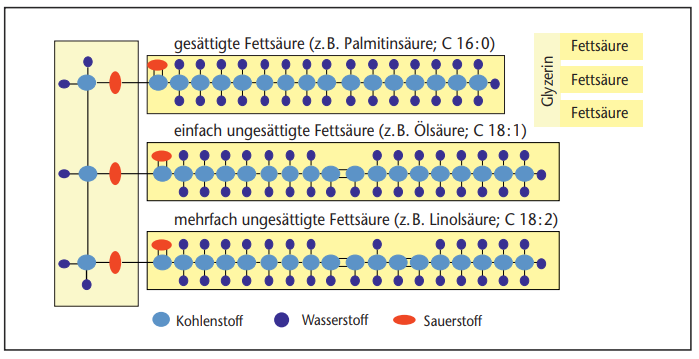
Fette
Aufbau von Fetten:
Fette, auch Lipide genannt, gehören, neben Kohlenhydraten, Proteinen, Ketonen und Alkohol, zu den fünf Energielieferanten. Chemisch betrachtet, bestehen sie aus zwei Arten von Bausteinen: Dem dreiwertigen Alkohol Glycerin und drei Fettsäuren. Die beiden Bausteinarten bestehen aus den Elementen Kohlenstoff (C), Sauerstoff (O) und Wasserstoff (H). Die drei Fettsäuren sind über ein Sauerstoffatom an die drei Bindungsmöglichkeiten des Glycerins gebunden. Diesen Vorgang bezeichnet man als Veresterung. Die gebundenen Fettsäuren können vom Aufbau gleich sein, meistens handelt es sich aber um unterschiedliche Fettsäuren. Sie unterscheiden sich zum einen in ihrer Kettenlänge und zum anderen in der Anzahl enthaltener Doppelbindungen (gesättigte Fettsäuren und ungesättigte Fettsäuren) (Abb. 1) (1).

- Matthäus, B. (2014). Fette und Öle: Grundlagenwissen und praktische Verwendung. Ernährungs Umschau (3/2014), 162-170.